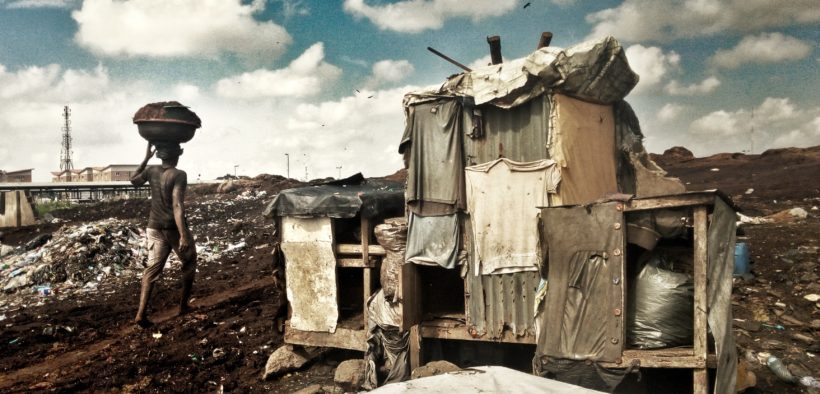Child Labor and COVID-19
Share

Image Credits: @remyajenifuja on Unsplash (Unsplash License)
Background
Child labor is on the rise despite significant efforts to curb it. During the COVID-19 pandemic, child labor has sky rocketed by an estimated 8.9 million cases according to UNICEF. Child labor has been an issue of discussion for many years due to its direct correlation with the economy and social stature of countries. Institutions such as the International Labor Organization (ILO), a United Nations affiliated organization, and the Fair Labor Standards Act (FLSA), in the United States, have attempted to address this topic. The ILO aims to discourage child labor in countries through the establishment of two main conventions. First, the Minimum Age Convention which occurred in 1973 set a minimum age of employment at 12 years old. The second convention, the Worst Forms of Child Labour Convention, occured in 1999 and formally defined children as anyone under 18 years of age. This convention specifically focused on immersing children into the education system by removing them from dangerous environments. In addition to the ILO, countries have their own set of legal obligations that address child labor, such as in the United States, where the FLSA are the guiding laws. The FLSA aims to protect the rights of children and ensure their security and prosperity through emphasizing the importance of prioritizing their safety and educational opportunities.
Child Labor and COVID-19
Poverty is one of the leading causes of child labor, and has been intensified during the pandemic. Often, children in impoverished areas lack supplies for effective learning, and with COVID, their education was further jeopardized. Due to limited resources, children in these areas do not have access to the same opportunities of distance learning as others in more developed states. Even more worrisome, studies have shown that once children leave school, they may not return to their education and are more likely to succumb to child labor. In addition to this, COVID-19 caused a level of economic uncertainty for families. In turn, many families needed extra economic support. Some children were forced to help provide for their family, sacrificing their education. In fact, the impact of COVID-19 can be already be seen with child labor as UNICEF has recorded, “the number of children in child labour has risen to 160 million worldwide – an increase of 8.4 million children in the last four years.” The economic toll on families is truly apparent when viewing the heightened role of child labor in society. Particularly in regard to COVID-19, the agricultural sector benefited the most with the increase in child labor. In fact, 70% of children in child labor work in the agriculture sector.
Supply Chain
Due to an increase in lockdowns and social distancing protocols, the supply chain has been hindered. Because of the challenges with supply and school shutdowns, many businesses began to use children as cheap labor, which demonstrates the issue of modern slavery. This scenario can be seen in the agricultural field, which pushed for the further loosening of child labor laws. For example, in Latin America, there has been a push in the coffee sector to lower the minimum working age. This would allow industries to make a greater profit, while the rights of children are once again not prioritized. Because of the lack of monitoring and following through on protocols, many governments have been conducting fewer inspections during the pandemic, making it easier to utilize alternative forms of labor. Considering the negative consequences of the pandemic on supply chains, it is important to make changes that address the weaknesses that have become more apparent in the system. Accountability needs to be further established in the international system to reduce the levels of child labor within the supply chain through mandating and continually checking on the certifications of operating businesses and strengthening the auditing process to ensure safe and humane labor. Ultimately, it is crucial to maintain transparency to protect children within the supply chain.
Case Study : India
The increase in child labor can be seen especially in India. The 2011 Census of India states that 10.1 million children are engaged in labor or seeking work. With the forced shutdowns that accompanied India’s response to COVID-19, many children were moved from the classroom to farms or factories. Although there are institutions in place to stop child labor in the country, the number of cases reported are far smaller than the magnitude of child labor in reality. In India, there are a few major types of child labor that occur such as construction, domestic activities, and manufacturing. In 1998, it was estimated that 22% of the hand-knotted rug industry was supported by children. Many children are exposed to hazardous chemicals and dangerous workplaces. Oftentimes in the common agricultural sector, children are prone to injuries related to machinery and exposure to fertilizers and pesticides. While in the mining industry, children are exposed to hazardous chemicals and the dangers of mine collapses and excessive dust. In these industries, children are susceptible to long working hours and mental and physical abuse. To combat these conditions, India has implemented laws in an effort to decrease child labor. For example, India has developed the Factories Act of 1948, Mines Act of 1952, and Juvenile Justice (Care and Protection) of Children Act of 2000. Overall, these laws attempt to create minimum ages for children to work; however, they need to be ratified through creating and strengthening monitoring systems to ensure these laws are being effectively carried out. Additionally, India has also established the Right of Children to Free and Compulsory Education Act of 2009. This act is especially important as it mandates that private schools allocate 25% of their seats for disadvantaged minority and economic groups. These laws need to further incentivize individuals to participate and create consistency with consequences for those who fail to recognize the laws. India has worked towards establishing legal means to protect the rights and safety of children; however, with the rise of child labor, it is crucial to strengthen these laws.
Conclusion
Child labor is an issue that needs to be addressed especially due to its rise after the pandemic. There needs to be better laws and regulations established in countries across the world. Although some countries have frameworks developed, oftentimes they have little significance due to the lack of monitoring. Children are the future of the world – their education and prosperity in the long run should be stressed more than their current economic value.


Want to get involved?
Connect with us! Connect with us!